Longridge
House
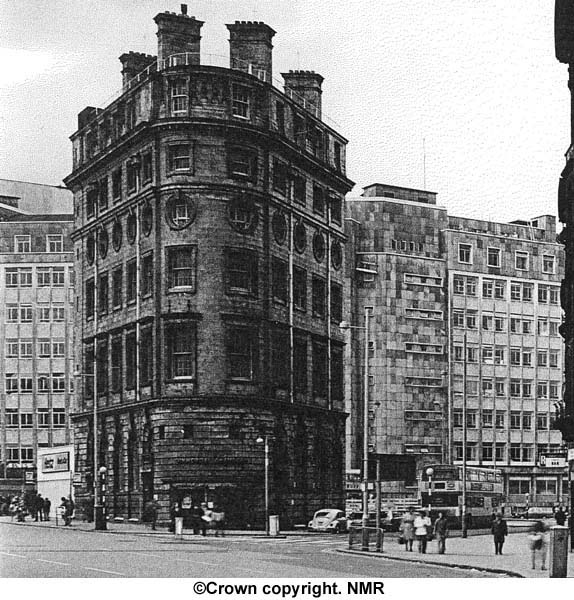
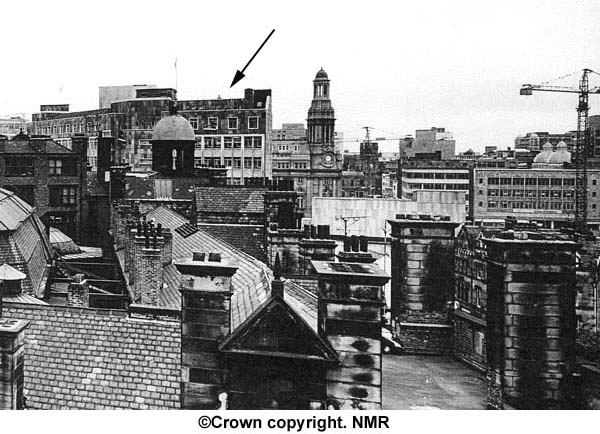
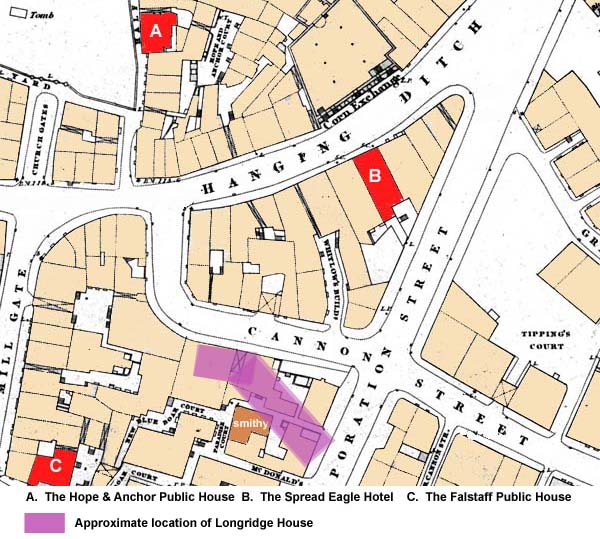
Longridge House, home to
the Royal & Sun Alliance Insurance Company, once
stood on the corner of Cannon Street and Corporation
Street. It can be seen in the next two images from
the Newbold Collection and shown here with the
permission of Chetham's
Library.
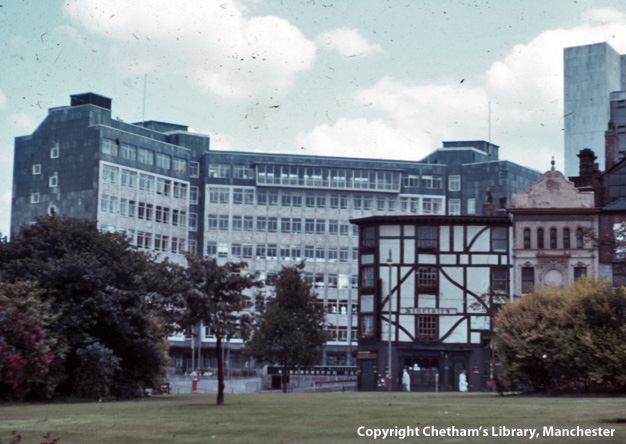
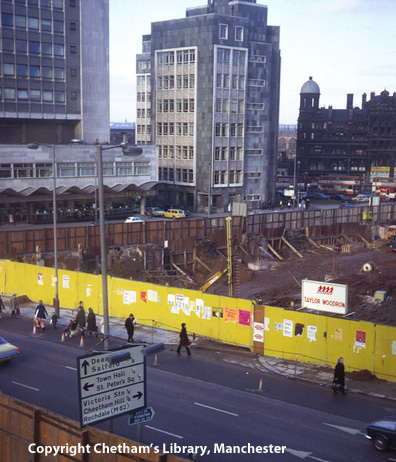
This large, multi-storey office building was clad, in
part, with green tiles. It was officially opened
in November 1959 and was designed by Harry S. Fairhurst
and Sons.



It can be glimpsed again
in the image below, taken from the roof of the Corn
Exchange.

To say the least
Longridge House was an ill fated building which sat on a
site that was in itself ill-fated. In the 19th
Century this site was occupied by a variety of
commercial buildings, as you can see in the OS map of
1844 - 45 shown below. The purple area marks the
approximate location that Longridge House was to occupy.

The Adshead Map below,
dated 1850, (shown here with the permission of Chetham's
Library), shows a similar scene.
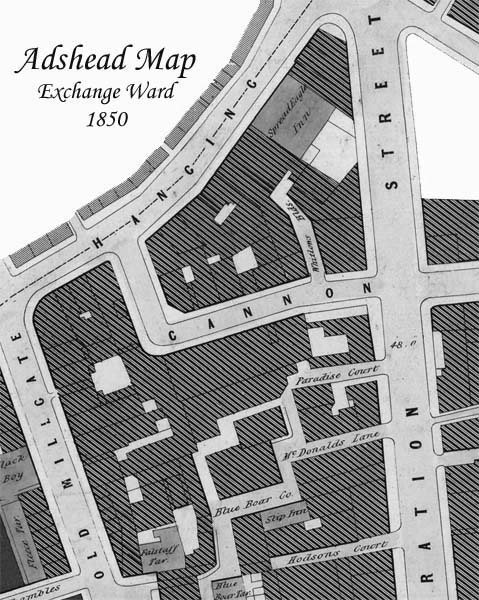

However, the
Manchester Blitz, in World War II radically changed
the area. The bombing and subsequent fires saw
large swathes of the area around the Cathedral
reduced to rubble. By the time the aerial
photograph below was taken, in 1953, Manchester had
a large number of outdoor car parks occupying the
sites of mant lost buildings. This was the
case with the corner of Cannon Street and
Corporation Street. The grey rectangles mark
the spot where Longridge House was to be built.
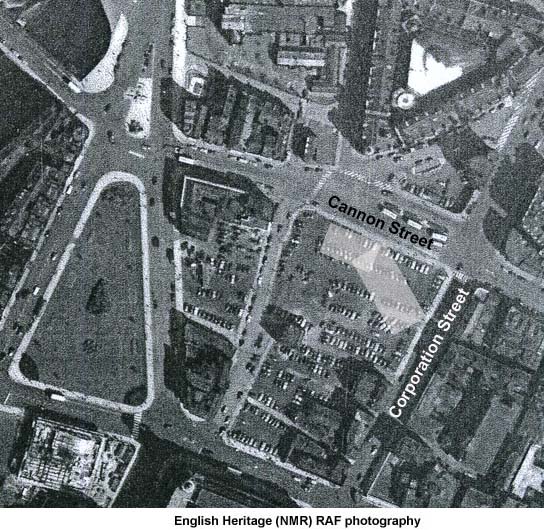
Close Window

Ironically, it
was another bomb that destroyed Longridge House
itself. Around 9 a.m. on Saturday, June
15, 1996 two hooded men parked a red and white
van on the double yellow lines on Corporation
Street near the junction with Cannon
Street. A subsequent phone call to Granada
TV from the IRA identified the van as a bomb
that was set to go off in one hour.
Despite the efforts of bomb disposal experts,
the bomb went off at 11:17 creating the largest
explosion in peace time in the UK.
Fortunately there were no fatalities but more
than 100 people were injured and an estimated
£70 Million of damage was done to surrounding
buildings. So extensive was the damage
that both Longridge House and the Marks &
Spencer store had to be demolished.
Today, a large Selfridges department store occupies the site of Longridge House. Cannon Street has gone and a public square, home to the Manchester Wheel, sits outside Selfridges.
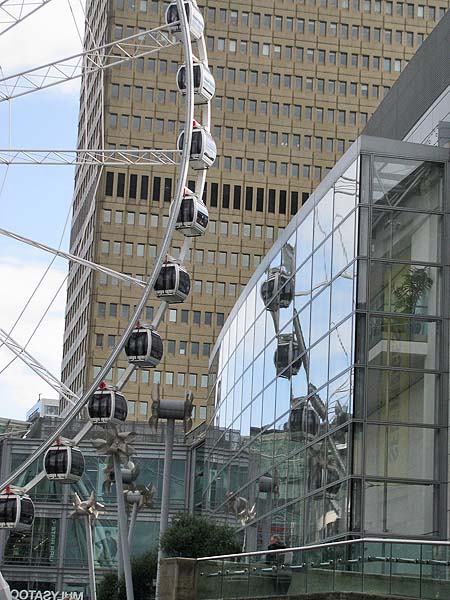
Just below the Selfridges sign, on the face of the building, there is an inconspicuous grey plaque.
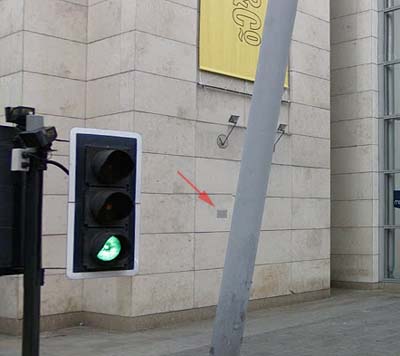
The plaque was placed here in commemoration of Longridge House.

I don't know why the building was called Longridge House but the plaque gives us a clue. Royal & Sun Alliance plc was the parent company which incorporated British Engine Insurance Ltd and Longridge House was the head office of British Engine. As the plaque indicates British Engine was founded in 1878 and at that time it in turn incorporated the Manchester Steam Users Association which had been founded in 1854. The move to insure steam boilers and more importantly to introduce a system of boiler safety inspections came after a number of deadly boiler explosions. The Manchester Steam Users Association was the first boiler inspection authority. It was founded by the eminent engineer Sir William Fairbairn. The associations chief inspector was R B Longridge. It seems reasonable to assume that the building was named in his honour.
Today, a large Selfridges department store occupies the site of Longridge House. Cannon Street has gone and a public square, home to the Manchester Wheel, sits outside Selfridges.

Just below the Selfridges sign, on the face of the building, there is an inconspicuous grey plaque.

The plaque was placed here in commemoration of Longridge House.

I don't know why the building was called Longridge House but the plaque gives us a clue. Royal & Sun Alliance plc was the parent company which incorporated British Engine Insurance Ltd and Longridge House was the head office of British Engine. As the plaque indicates British Engine was founded in 1878 and at that time it in turn incorporated the Manchester Steam Users Association which had been founded in 1854. The move to insure steam boilers and more importantly to introduce a system of boiler safety inspections came after a number of deadly boiler explosions. The Manchester Steam Users Association was the first boiler inspection authority. It was founded by the eminent engineer Sir William Fairbairn. The associations chief inspector was R B Longridge. It seems reasonable to assume that the building was named in his honour.
Close Window